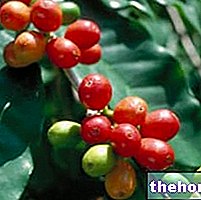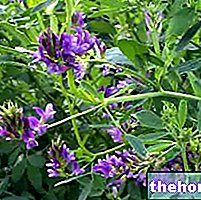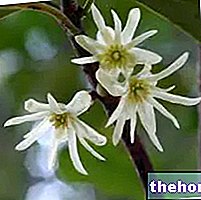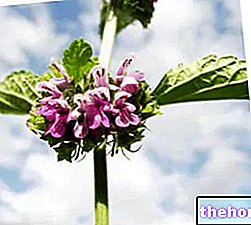Premise
How can we forget the wonderful and fragrant tiare flowers that embellish Tahitian necklaces? Faithful to the ancient tradition, the inhabitants of Tahiti give a floral necklace to tourists, being the tiare symbol of a happy welcome. The tiare flowers, immaculate and fragrant, are luxurious gardenias, appreciated in particular for their pure white color, as well as for the star shape artistically drawn by its petals.

Tiare: analysis of the name
The name tiare comes from the term tiàra, as well as crown: this association ideally refers to the corolla (or crown) of the flower. The particular shape of the corolla, in turn, refers to the headdress of some authorities (eg tiarà worn in ancient times by the popes as a symbol of power). Another nickname attributed to the tiare is “Candolle flower”, in homage to the herbalist botanist A. P. de Candolle.
Botanical description
The scientific name of the tiare is Gardenia tahitensis, shrubby plant belonging to the same family of coffee, cinchona and uncaria (Rubiaceae); some authors speak of the Rubiaceae as a super family, given that there are over 6,000 different species [taken from www.lerboristeria.com/]
The tiare is a medium-sized shrub species, typical of regions with a tropical and subtropical climate: the plant fears low temperatures, therefore it is classified among the highly fragile and sensitive ones; just think that tiare flowers are affected by the "low" temperatures and already at 10 ° C they can easily be damaged. Due to this peculiarity, the cultivation of the plant outside the tropics is particularly difficult: the Polynesian soils, fertile, calcareous, coral or volcanic, prove to be specifically appropriate for the development of tiare.
The flowers of tiare only rather large, pure white in color and, above all, very fragrant: near the evening, the tiare flower erects its corolla towards the sky, permeating the air with a sweet, intense but at the same time delicate and unmistakable.
Uses of the flower
In addition to their well-known ornamental and decorative use, tiare flowers are also widely used in cosmetics. Through the enfleurage technique, a very fragrant oil is obtained; the tiare flowers are macerated in the oil extracted from the coconut pulp: at the end of the extraction - which lasts about two weeks - an oil known as monoi from Tahiti (or of tiare). Similar to butter, monoi oil is in a solid state when the temperature drops below 22 ° C. Monoi, coconut oil scented with tiare essence, is used in cosmetics for the formulation of moisturizing products and nutrients; moreover, tiare monoi is used to repair the damage caused by tanning, exploiting its antioxidant and elasticising properties. Furthermore, it seems that sun products formulated with tiare monoi are also effective in slowing down the uneven discoloration of the tan [taken from www.lerboristeria.com, written by Dr. M. Multineddu]
The tiare is a good aid for the beauty of the hair: the conditioning power of this flower protects the hair from the sun and counteracts dryness, making it easy to comb and soft.
Thanks to the intense and decisive fragrance, perfumed waters and essences are formulated to be added to the bath water to perfume and soften the skin. Not surprisingly, a wide range of shower gel, milk bath, shampoo and body creams is prepared precisely with the " essence of tiare.
Summary
Tiarè: to fix concepts
- Emblem of Tahiti
- Flaunted as an everyday ornament
- Floral diamond necklaces
- Symbol of celebration and sophistication
- Symbol of happy welcome
- From tiàra, as well as crown → corolla (or crown) of the flower
- Tiare → headdress of some authorities
- Botanical name: Gardenia tahitensis
- Family: Rubiaceae
- Plant description: medium-sized shrub species, typical of tropical and subtropical climates
- Difficulty of cultivation: fragile plant, it fears temperatures already below 10 ° C
- Soils: fertile, coral limestone or volcanic
- Flowers: large, white and very fragrant
Cosmetic sector
- Moisturizing and nourishing products
- Repairs damage caused by tanning → Antioxidant and elasticising properties
- Slows down the uneven discoloration of the tan
- Hair beauty aid
- Protects hair from the sun, fights dryness, makes it easy to comb
- Softens the skin
Select plant Fir Acacia Acerola Sorrel Yarrow Yarrow Yarrow Aconito Adatoda Garlic Agnocasto Agrimonia Alchemilla Alkekengi Aloe Altea Witch Hazel Ammi or Visnaga Pineapple Andrographis Anemone Pulsatilla Angelica Anise Star Anise Japanese Star Anise Bitter Orange Bitter Areca Arnica Harpagophytum Arpagophyte Artemisia Asteragus Basil Asparagus Asparagus Peruvian Asparagus Asparagus Asparagus Hawthorn Boldo Borage Shepherd's Purse Boswellia Bucco Butea superba Cocoa Coffee Cajeput Calamus Calamus Marigold Camedrio Chamomile Roman Chamomile Camphor Cinnamon Ceylon Maidenhair Capuchin Artichoke Cardamom Cardiac Thistle Asian Thistle Carvi Cascara Cassia Catecu Catha Cabbage Celandine Chicory Centaurea Cinnamon Cypress Celandine Chives Cypress Coca Cola Colchico Combreto Condurango Comfrey Coriander Cranberry Barberry American Chrysanthemum Cumin Turmeric Damiana Digital Dioscorea Drosera Dulcamara Dunalilella Echinacea Eder a Ephedra Elenio Eleutherococcus Helichrysum Evening primrose Horsetail Alfalfa Erica Euphrasia Erisimo Escolzia Eucalyptus Farfara Farfaraccio Calabar bean Fenugreek Fennel Phytolacca Frangola Ash Fumaria Japanese Mushrooms Galega Ganoderma lucidum Garcinia Cambogia Mulberry Gentian Broom Ginkgo Ginkgo Guipana Guipana Gynestra Ginkgo Hibelia Gymnasium Hibiscus Guarulp St. John's Wort Horse Chestnut Ispaghul Hyssop Jaborandi Kava kava Konjac Laminaria Cherry Laurel Lavender Lemongrass Lespedeza Lovage Icelandic Lichen Lemon Flax Lippia Licorice Lobelia Hops Maca Marjoram Maize Mallow Manna Marrubio Marrubio d "water Matè Melaleuca Meliloto American Lemon balm Myrtle Myrama Walnut Nutmeg Walnut vomica Olive tree Meadowsweet Ononide Opuntia Oregano Orthosiphon Nettle Poppy Papaya Parietaria Feverfew Passiflora Chilli Perilla Periwinkle Phyllanthus Plantain Picrorhiza Pilosella Pino Pisci dia Podofillo Polygala Grapefruit Parsley Psyllium Pueraria mirifica Butcher's broom Pygeum Quassia Oak Rhubarb Ratania Rauwolfia currant Castor bean Rhodiola Rosehip Rosemary Rue Willow Sarsaparilla Sage Elderberry Sassafras Sedum Ergot Senna Serenoa Repens Soybean Solidago Tansy Taraxus Tamarind Tamarind Tamarind Tamarind Tamarindo Ursina Valerian Vanilla Mullein Verbena Veronica Viburnum Vinca Pansy Mistletoe Vine Withania Yohimbe Saffron Ginger Pumpkin Select disease Juvenile Acne Rosacea Tinnitus Tinnitus Aerophagia Tendon Affections Afonia Aphthae Algias Functional Halitosis Breastfeeding Allergy Anemia Anguish Anxiety Arteriosclerosis Asthrosis Asthrosis Arthritis Arthritis Men Sex Woman Blepharitis and Conjunctivitis Eye bags Bronchitis Gallstones Kidney stones Salivary stones Baldness Androgenetic Candida Fragile hair Caries Headache Cellulitis Motion sickness Cystitis C limaterio Cholecystopathy High cholesterol Ulcerative colitis Colonoscopy Contusions Hematoma Convalescence Couperose Depression Dermatitis Diaper dermatitis Diabetes Diarrhea Erectile dysfunction Dyslipidemia Dysmenorrhea Dyspepsia Disturbances of vision Hemorrhoids Epistaxis Herethism Heart disease Fever Fibromyalgia Gastro-intestinal disease Flatulence Hypertension Fibromyalgia Gastrointomnia Jaundice Laryngitis Renal lithiasis Toothache Sore throat Thinness Menopause Meteorism Mononucleosis Alzheimer's disease Crohn's disease Nausea Vomiting Obesity Dark circles Onychomycosis Osteoporosis Dry skin Periarthritis Piorea Low pressure Prostatitis Psoriasis Colds Breast fissures Anal fissures Gastro-nasal rhinitis Senescence Premenstrual Syndrome Sinusitis Quit smoking Overweight Fatty liver Constipation Stomatitis Stress Cough Triglycerides high Ulcer Burns Nails Brittle flashes Heat Warts Dizziness Properties herbal Tanning Abortive adaptogenic Aphrodisiac bittering analgesic anesthetic anorectics analgesic antacid anti-allergic anti-asthmatic Antibiotic catarrh Anticellulitiche anticonvulsant Antidiaforetiche antidiarrheal edematous anthelmintic antiemetic Antiemorroidarie antiphlogistic Antiidrotiche Antinevrotiche Antioxidants antipyretic antirheumatic antiscorbutic Antiseptic antispasmodic anti-uric Aperitive Flavoring Astringent Balsamic Bechiche Capillarotrope Cardiotonic Carminative Cathartic Caustics Healing Cholagogues Choleretic Dyes Decongestants Deodorants Purifying Diaphoretic Cleansers Disinfectants Detoxifiers Thirst quenching Diuretics Exciting Emetics Emmenagogues Emollients Hemostatic Energies Hepatoprotectors Expectorants Eupepticus Moisturisers Galactosensitizers lanti Hypertensive Hypnotic Hypoglycemic Hypotensive Irritants Laxatives Soothing Narcotic Nerves Nutrients Odontalgic Pectoral Purgative Revulsive Remineralizing Refreshing Rubefacient Scialagoghe Sedative Soporifugas Sneezing Stomachic Stomatics Narcotic Vascular Tightenitis




























